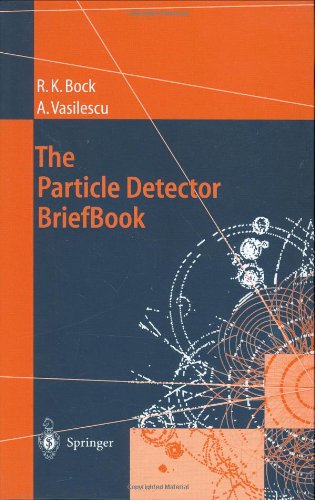
The Particle Detector BriefBook
by R.K. Bock, A. Vasilescu
Publisher: CERN, Geneva 1999
ISBN/ASIN: 3540641203
ISBN-13: 9783540641209
Number of pages: 135
Description:
This is a condensed handbook, or an extended glossary, written in encyclopedic format, covering subjects around particle detectors, the underlying physics, and the analysis of their data. It intends to be both introduction for newcomers and reference for physicists working in the field.
Download or read it online for free here:
Read online
(online preview)
Similar books
 Introduction to Groups, Invariants and Particles
Introduction to Groups, Invariants and Particlesby Frank W. K. Firk - Orange Grove Texts Plus
This is an introduction to group theory, with an emphasis on Lie groups and their application to the study of symmetries of the fundamental constituents of matter. The text was written for seniors and advanced juniors, majoring in the physical sciences.
(19599 views)
 Particle Physics 1
Particle Physics 1by Marcel Merk - Nikhef
These are lecture notes to the 1-st year master course. Topics covered: Concepts and History; Electrodynamics of spinless particles; Electrodynamics of spin 1/2 particles; The Weak interaction; Electroweak scattering: The Standard Model.
(9537 views)
 Proceedings of the 2009 CERN-Latin-American School of High-Energy Physics
Proceedings of the 2009 CERN-Latin-American School of High-Energy Physicsby C. Grojean, M. Spiropulu - CERN
These proceedings contain lectures on quantum field theory, quantum chromodynamics, physics beyond the Standard Model, neutrino physics, flavour physics and CP violation, particle cosmology, high-energy astro-particle physics, and heavy-ion physics.
(9135 views)
 Computer Tools in Particle Physics
Computer Tools in Particle Physicsby Avelino Vicente - arXiv
In this course we will learn how to use the computer tools -- such as SARAH, MicrOmegas, MadGraph, SPheno or FlavorKit -- to explore new physics models and get robust numerical predictions to probe them in current and future experiments.
(7459 views)